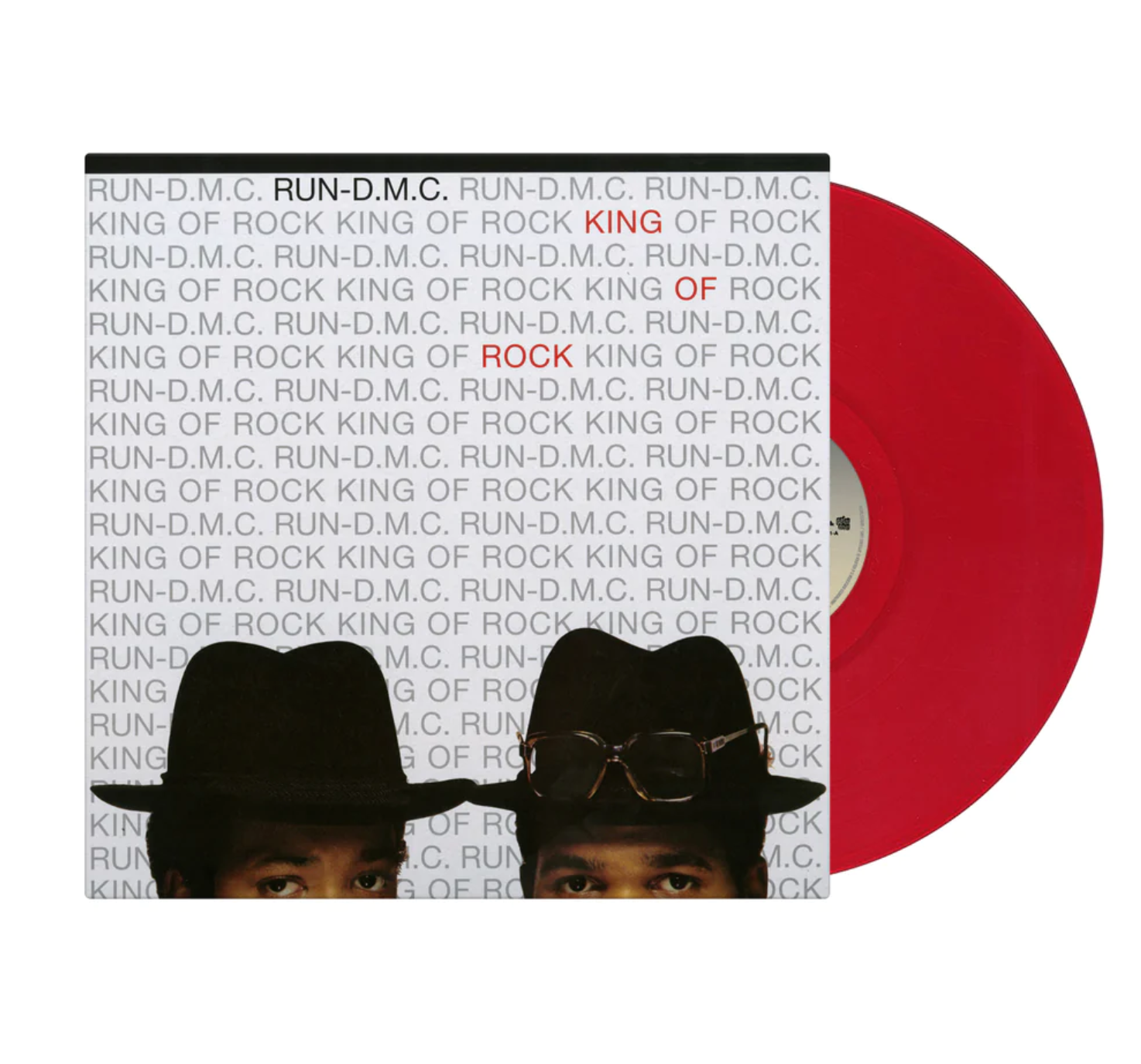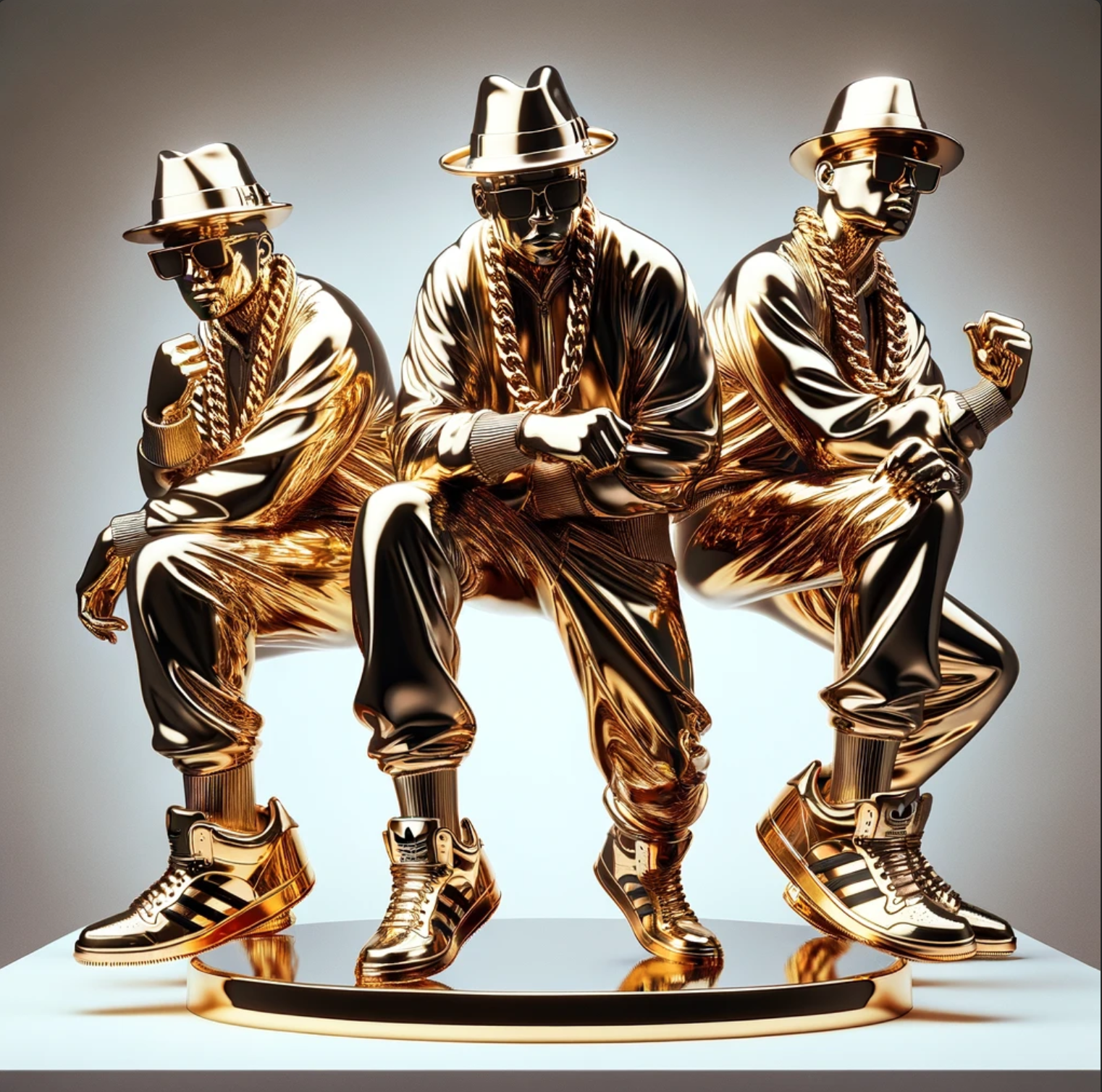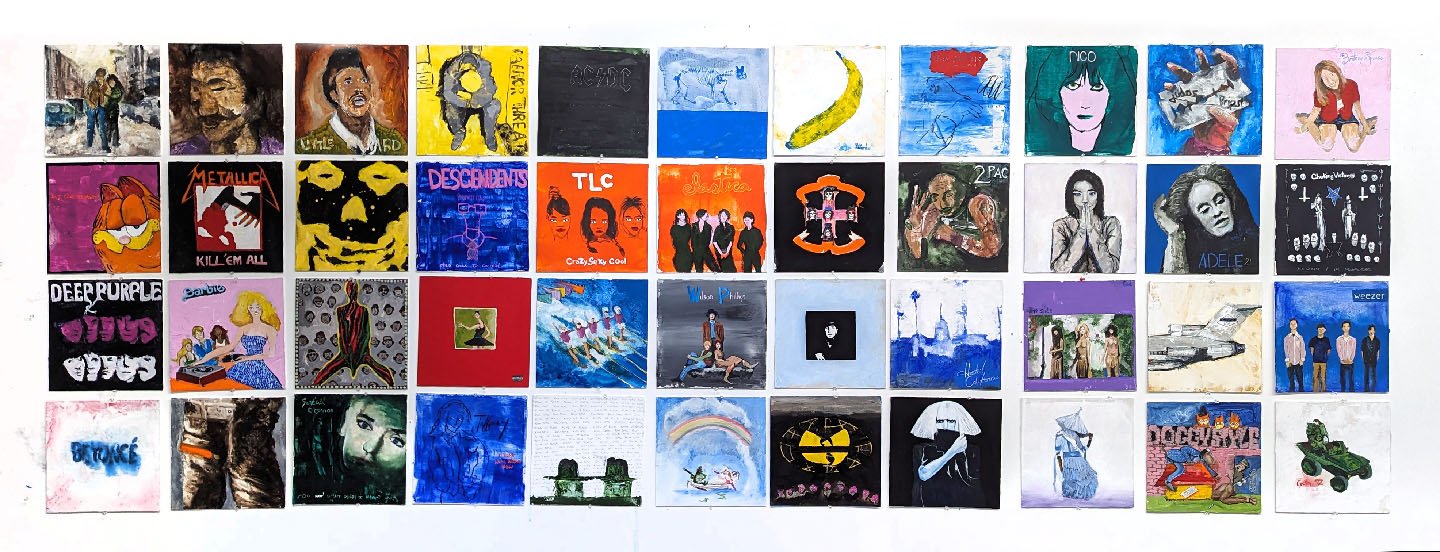HISTORY OF RUN DMC : A HIP HOP PAINTING
RUN DMC: Hip Hop and Contemporary Painting
In the vibrant landscape of the early 1980s, a groundbreaking trio from Hollis, Queens, known as Run-DMC, emerged, setting the stage for a profound cultural revolution that would intertwine the dynamic worlds of hip-hop, rap, painting, and contemporary art. Joseph "Run" Simmons, Darryl "DMC" McDaniels, and Jason "Jam Master Jay" Mizell didn't just produce music; they crafted a cultural phenomenon that seamlessly bridged the raw energy of New York City's streets with the mainstream music audience. Their unparalleled influence is deeply felt not only in the realms of hip-hop and rap but also across the expansive spectrum of contemporary art, fashion, and societal dialogue, making them pivotal figures in the cultural history documented in blogs and articles focused on hip-hop history, rap music analysis, contemporary art trends, and the evolution of urban fashion.
PIONEER HIP HOP ARTISTS
Run DMC painting by Jac Lahav
Prints Available : INQUIRE
As pioneers of "new school" hip-hop, Run-DMC marked a significant departure from the genre's initial party anthems, introducing a sound characterized by raw, unfiltered authenticity and street-smart lyricism. This authenticity was mirrored not only in their groundbreaking music but also in their visual identity. Rejecting the flamboyant costumes that dominated early hip-hop stages, they opted for a more relatable streetwear uniform of Adidas sneakers, leather jackets, and fedoras, setting a new standard for hip-hop fashion that would resonate with fans and followers across blogs and social media platforms dedicated to hip-hop style and contemporary urban art.
KING OF ROCK : AN ARTISTIC GEM
The release of their iconic album "King of Rock" in 1985 was a monumental event in the history of music, signaling hip-hop's foray onto the mainstream stage. The title track's defiant lyrics and rock-infused beats served as a bold declaration of hip-hop's dominion in the musical landscape, challenging the established boundaries between genres. This fusion of rock and rap not only paved the way for future musical innovations but also inspired countless artists and musicians, as documented in various articles and analyses exploring the intersection of music genres in contemporary art.
Furthermore, "King of Rock" underscored Run-DMC's role in democratizing music production and consumption. Their innovative use of technology and sampling demonstrated that creativity and ingenuity could drive musical evolution, a theme explored in academic papers and discussions on the impact of hip-hop on contemporary art practices. This ethos of innovation and accessibility has inspired a new generation of artists to explore and experiment, fundamentally altering the music production landscape and its representation in contemporary art galleries and exhibitions.
HIP HOP INFLUENCE ON CONTEMPORARY ART
Run-DMC's impact extends far beyond music, influencing the realm of contemporary art and design. Their visual identity, captured in album covers, music videos, and fashion, has become a source of inspiration for artists and designers worldwide, integrating hip-hop culture into visual and stylistic choices and elevating the genre to a form of artistic expression worthy of critical and academic study. This blend of hip-hop, rap, and contemporary art continues to be a focal point in discussions and exhibitions exploring the influence of music on visual culture.
KING OF ROCK: ICONIC VISUAL HISTORY
In 1985, Run-DMC's "King of Rock" album cover boldly symbolized rebellion, identity, and ambition. Featuring Joseph "Run" Simmons, Darryl "DMC" McDaniels, and Jason "Jam Master Jay" standing defiantly before a decaying rock wall, it marked a pivotal moment in music and culture. This imagery, alongside their choice of leather jackets, hats, and Adidas sneakers, wasn't just fashion but a declaration of hip-hop's rise and a challenge to rock's dominance. It reflected a psychological manifesto of belonging and defiance, bridging the street and the mainstream. The cover's black-and-white scheme emphasized this message, presenting a stark contrast between the old and the new, and the merging of rock and hip-hop. "King of Rock" was more than an album; it was a call to break barriers and redefine cultural and musical landscapes, urging a reevaluation of what it means to be a king in an ever-changing world.
The legacy of Run-DMC is not confined to their musical achievements but encompasses the cultural shifts they initiated, bringing hip-hop to the forefront of global consciousness and transforming it from a niche genre into a global force that shapes fashion, art, and social discourse. Their induction into the Rock and Roll Hall of Fame in 2009 stands as a testament to their groundbreaking contributions to music and culture, a topic of interest in SEO-driven content focusing on the intersections of hip-hop, rap, painting, and contemporary art.
In conclusion, Run-DMC's "King of Rock" was more than an album; it was a manifesto for a cultural revolution that has left an indelible mark on music, contemporary art, and society. Through their music, style, and unapologetic authenticity, they laid the groundwork for today's artists, who continue to draw inspiration from their pioneering spirit. Reflecting on their enduring impact, it's clear that Run-DMC's legacy remains as vibrant and relevant today as it was in the 1980s, a testament to their significance in the ongoing dialogue between hip-hop, rap, painting, and contemporary art.




